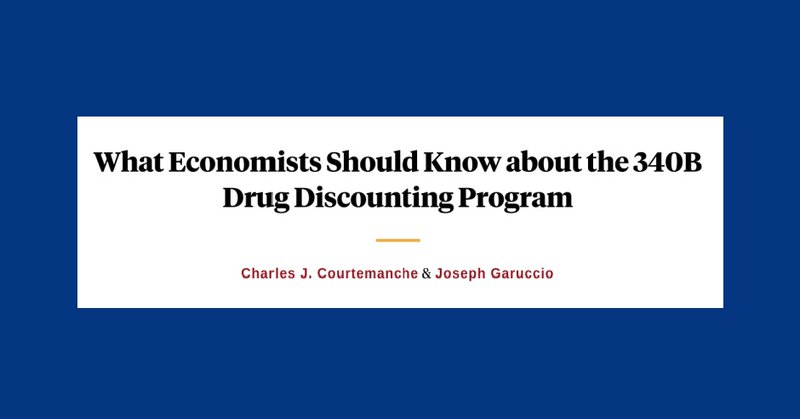
UKISFE
@UKISFE
Followers
243
Following
560
Media
179
Statuses
909
The Institute for the Study of Free Enterprise is dedicated to understanding the role that markets play in the economy and in society.
Lexington, KY
Joined March 2017
A new study by @Courtemanche_CJ and Joseph Garuccio reviews the literature on the impacts of Certificate-of-Need laws. Read it on our website: https://t.co/1rjk74IRUP
isfe.uky.edu
Paper
0
1
0
Despite the well-known weight gain from nicotine cessation, e-cigarette taxes do not contribute to obesity and may even decrease it, from @Courtemanche_CJ, Tessie Krishna, @YangLiangEcon, @SDSUCHEPS, and Anthony Chuo https://t.co/zIKGV7apFp
10
8
10
A new working paper by @Courtemanche_CJ, @tessie_krishna, @YangLiangEcon, Joseph J. Sabia, and @chuonomics examines the effect of e-cigarette taxation on obesity. Read it on our website: https://t.co/3p4hAkjmVx
isfe.uky.edu
Paper
0
0
2
This paper was released as ISFE Working Paper No. 60 Read it on our website: https://t.co/X4OcJWTJyt
isfe.uky.edu
Op-Ed Paper
0
0
0
340B Report (@340B_Report) featured the 340B Drug Pricing Program working paper by ISFE's Charles Courtemanche (@Courtemanche_CJ) and Joseph Garuccio. https://t.co/Qw8NHm3dlm
340breport.com
There’s a gap in economics research on the 340B program, and economists could enrich 340B stakeholders’ understanding of the program by complementing existing studies found predominately in public...
1
0
0
Congratulations to Chad Cotti, @Courtemanche_CJ, @YangLiangEcon, @JCMecon, @ErikNesson, and Joseph J. Sabia on their paper being accepted for publication in @JHealthEcon! This paper was previously released as ISFE Working Paper No. 55 https://t.co/lPy73Rb61E
isfe.uky.edu
Paper
0
0
3
The new ISFE working paper by Michael E. Darden, @reginaldbhebert, @mikepesko, and @samuel_m_sturm uncovers important unintended consequences of cigarette taxes, particularly for low-income individuals. Read it on our website: https://t.co/ogqvkgBxE8
isfe.uky.edu
Appendix Paper
0
0
1
The views expressed here are those of the authors only, and do not represent the views of the Institute for the Study of Free Enterprise, Gatton College, or UK.
0
0
1
We also discuss 340B’s legislative history. Drug companies agreed to expand the program in return for other policies that benefitted them: more business through Part D and the ACA as well as prohibitions on importing low-cost drugs and the government negotiating drug prices.
1
0
2
Prior to the expansion of contract pharmacies, the capture rate was perhaps as low as 2%. A take-up rate this low would be unheard of in public programs SNAP and Medicaid, and would be cause for immediate program overhauls.
1
0
1
From the perspective of federal policy, is the program “too big”? One way to shed some light on this question is to discuss the “capture rate”, or percentage of eligible drugs that end up being filled at 340B pharmacies, in terms of take-up rates.
1
0
1
This means that, in states such as Kentucky that do not have a major drug manufacturing presence, the clearest effect of a law preserving 340B discounts for contract pharmacies would be to increase the flow of out-of-state money into the state.
1
0
1
However, given the limited and inconclusive nature of much of this evidence, the only indisputable effect of the program is to redistribute money from drug manufacturers to covered entities.
1
0
1
But contract pharmacies and associated outpatient clinics tend to be located in more affluent communities than the covered entity itself, and there is also some evidence that the 340B program creates incentives that slow the adoption of low-cost biosimilar drugs.
1
0
1
With that said, there is suggestive evidence that the program increases charity care and provision of critical services that are underprovided in rural areas, particularly oncology. It also appears to reduce Part B drug spending.
1
0
1
While the volume of studies is substantial, challenges with distinguishing correlation from causality and generalizing results beyond specific settings have largely prevented a consensus from being reached as to whether covered entities respond in desirable or undesirable ways.
1
0
1
In a study released by ISFE at the @universityofky's @UKGattonCollege, Joseph Garuccio and @Courtemanche_CJ examine the history of the 340B program, scholarly evidence on its impacts, and the implications of this evidence for public policy moving forward. https://t.co/X4OcJWTJyt
isfe.uky.edu
Op-Ed Paper
1
2
2
The rapid expansion of contract pharmacies has drawn particular scrutiny. Drug companies responded by enacting restrictions that in turn led to a flurry of lawsuits and legislative activity. Eight states have already enacted laws intended to preserve contract pharmacy networks.
1
0
1
The funds can help struggling hospitals provide charity care and unprofitable lines of service. But these discounts are costly to pharmaceutical companies, who allege that the funds are not always used as intended and that the program has grown beyond its intended size.
1
0
1
It allows facilities like hospitals who serve disproportionate numbers of low-income patients to purchase drugs at discounts. These drugs have to be prescribed at the covered facility and can be filled at either a pharmacy within the facility or outside “contract pharmacies”.
1
0
1


